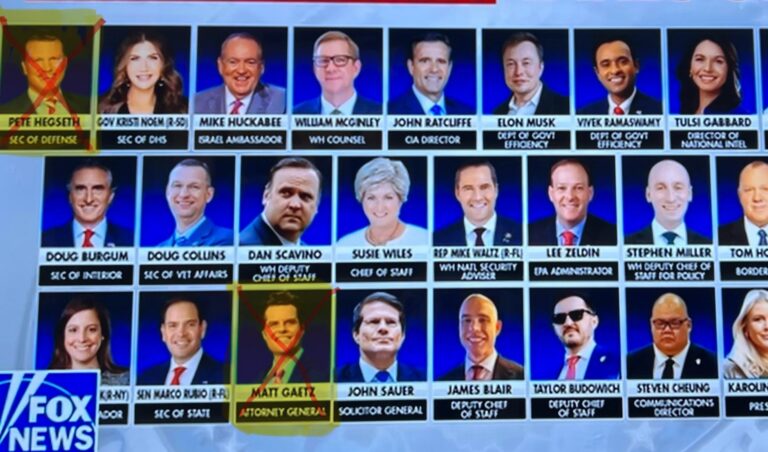
The debate over immigration reform is one of the most polarized issues in the United States. While both proponents and opponents of reform often agree that the system is broken, the visions for how to fix it diverge sharply. This divide largely hinges on whether reform should prioritize national security or whether it inadvertently leads to social and political division. This article delves into the arguments on both sides, presenting examples and perspectives that illustrate how immigration reform can be seen both as a pathway to enhanced security and as a source of potential division within society.
The Case for Immigration Reform as a Security Measure
Supporters of stringent immigration reform argue that robust policies are essential for national security. They contend that stronger immigration laws are necessary to safeguard American borders and maintain social order. Here are some of the primary arguments and examples that illustrate this viewpoint.
Border Security and Crime Prevention
Proponents of stricter immigration policies often point to border security as a central component of national defense. They argue that insufficient border control allows not only for unauthorized immigration but also for the smuggling of illegal drugs, human trafficking, and the potential entry of individuals who pose a threat to national security.
The Secure Fence Act of 2006 was passed with the intention of bolstering border security by authorizing the construction of physical barriers along the U.S.-Mexico border. Supporters claimed that by reducing the number of illegal crossings, the United States could more effectively manage who enters the country. Data from the Department of Homeland Security (DHS) showed that illegal border crossings in areas with increased physical barriers saw a reduction in apprehensions, indicating a drop in unauthorized entries.
Economic Security and the Protection of American Jobs
Another argument for restrictive immigration policies is economic security. Advocates contend that an influx of undocumented workers can lead to job competition that disadvantages American citizens, particularly those in lower-income sectors.
In 2017, the Trump administration introduced policies that aimed to curtail the number of H-1B visas, a move intended to prioritize jobs for American citizens. Although this policy focused on legal immigration rather than undocumented individuals, it highlighted the administration’s belief that tighter immigration laws could protect American workers from foreign labor competition.
Counter-Terrorism and Vetting of Immigrants
Another security-focused argument for strict immigration policies is the potential for individuals with malicious intent to exploit the immigration system. Advocates argue that a rigorous vetting process is essential for identifying threats before they enter the country.
The Travel Ban introduced by the Trump administration in 2017, which temporarily restricted travel from several predominantly Muslim countries, was argued as a security measure designed to protect the United States from potential terrorism threats. Proponents claimed that the policy was necessary to prevent individuals from high-risk countries from entering the U.S. without proper vetting.
Arguments Against Immigration Reform as a Security-Driven Agenda
Critics of security-driven immigration reform argue that such policies create more social division than safety. They contend that the focus on security often unfairly targets immigrant communities, fosters xenophobia, and creates an unwelcoming atmosphere for those seeking refuge or a better life. Here are some counterarguments and examples that highlight these concerns.
Humanitarian Concerns and the Rights of Immigrants
Opponents argue that security-focused immigration policies often disregard the rights and dignity of immigrants, particularly those fleeing violence and persecution. Critics claim that policies framed around security frequently lead to inhumane treatment of asylum seekers, migrants, and refugees.
The “Remain in Mexico” policy (officially known as the Migrant Protection Protocols) implemented during the Trump administration required asylum seekers at the southern U.S. border to wait in Mexico while their cases were processed. Human rights organizations reported instances of violence and exploitation in border towns, and critics argued that the policy put vulnerable individuals at risk without sufficient justification on the grounds of security.
Economic Benefits of Immigration
Critics of strict immigration reform argue that immigrants play a vital role in the U.S. economy. They contend that immigrant workers fill essential roles in industries that are often overlooked by American citizens, such as agriculture, construction, and service sectors. They also argue that immigrants contribute to the tax base and stimulate economic growth.
Research conducted by the National Academies of Sciences, Engineering, and Medicine in 2016 found that immigrants have a net positive impact on the U.S. economy over the long term. The study concluded that immigrants contribute significantly to innovation, productivity, and overall economic growth, challenging the notion that immigration poses a threat to economic security.
Social Integration and the Fear of Xenophobia
One of the strongest arguments against security-focused immigration reform is the risk of fostering xenophobia and social division. Critics argue that policies emphasizing security over integration send a message of exclusion to immigrant communities and create an atmosphere of fear.
The “Zero Tolerance” policy enacted in 2018, which led to the separation of children from their parents at the U.S. southern border, faced widespread backlash. Critics argued that the policy was inhumane and fueled anti-immigrant sentiment within the country. The American Psychological Association condemned the policy, citing evidence that the separation of children from their families could lead to long-term psychological harm, thus illustrating the societal impact of such a policy on immigrant communities.
Balancing Security with Inclusion: Is Compromise Possible?
While the debate over immigration reform remains polarized, some policymakers and experts believe there may be room for a balanced approach. They argue that it’s possible to create policies that address legitimate security concerns without alienating immigrant communities or fostering division. Here are some of the potential pathways for creating immigration policies that balance security with inclusivity.
Comprehensive Immigration Reform Legislation
One proposed solution is to adopt a comprehensive immigration reform package that addresses both border security and pathways to citizenship for undocumented immigrants. Advocates of this approach argue that it provides a more balanced framework for managing immigration.
In 2013, a bipartisan group of U.S. senators, known as the “Gang of Eight,” introduced the Border Security, Economic Opportunity, and Immigration Modernization Act. The bill proposed a path to citizenship for undocumented immigrants, increased border security measures, and reformed the visa system to address labor market needs. Although the bill ultimately failed in the House, it is often cited as an example of a balanced approach to immigration reform.
Improved Technology and Resources for Border Security
Another approach is to improve border security through technology and resources rather than solely relying on physical barriers or restrictive policies. This method seeks to enhance security without creating the physical and symbolic division often associated with wall construction.
The DHS has invested in drone technology, surveillance systems, and biometric identification at ports of entry. These technologies allow for efficient monitoring without physically separating communities. Proponents argue that using technology allows the U.S. to secure its borders in a less divisive manner, protecting both national security and the rights of immigrants.
Legal Pathways for Work and Residency
Expanding legal pathways for immigrants to work and reside in the United States is another proposal that attempts to balance security with integration. By providing more visas and improving the legal immigration process, the argument goes, the U.S. can reduce the incentive for individuals to enter the country illegally.
The Deferred Action for Childhood Arrivals (DACA) program was introduced in 2012 as a means of providing temporary protection to undocumented immigrants who were brought to the U.S. as children. Supporters argue that programs like DACA offer a humane solution for individuals who already contribute to society, while also helping authorities focus resources on individuals who might pose a legitimate security threat.
Concluding Security or Division?
The question of whether immigration reform represents a pathway to security or division is not easily answered. On one hand, national security is a valid concern, and robust immigration policies are necessary to protect a country’s borders and citizens. On the other hand, policies that focus exclusively on security often risk creating social divisions, undermining economic benefits, and alienating immigrant communities.
In weighing these arguments, it’s clear that a balance must be struck. Policymakers face the challenge of crafting policies that address security concerns without compromising the nation’s values of inclusivity and diversity. As immigration continues to shape the social and economic fabric of the United States, the need for a nuanced, balanced approach to reform remains as urgent as ever.
Whether the country can find common ground on this issue, however, remains to be seen. For now, the debate over immigration reform continues to be a defining feature of American politics, reflecting both the challenges and complexities of creating a society that values both security and unity.





